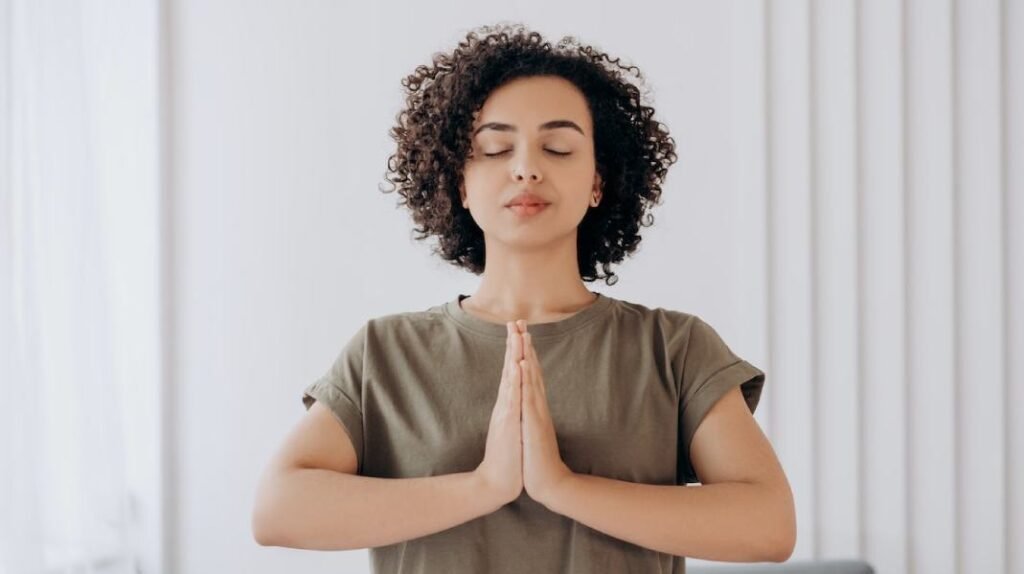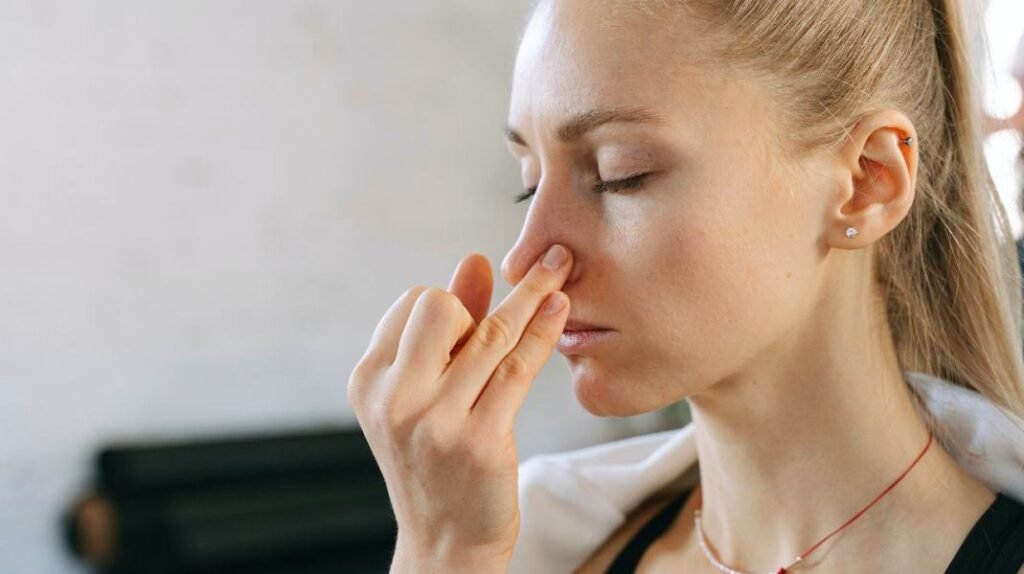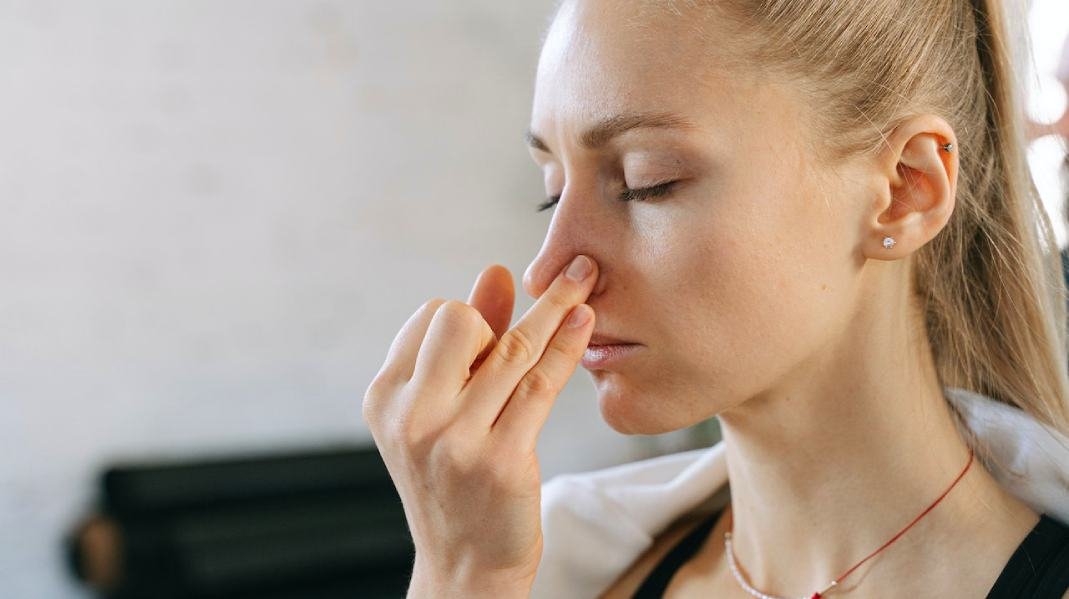Feeling lightheaded can be an unsettling and uncomfortable experience, but there’s no need to worry. In this article, you will discover the power of breathing exercises in alleviating lightheadedness. With simple techniques that can be done anywhere and anytime, you’ll learn how to regain control of your breathing, increase oxygen flow to your brain, and find relief from that dizzy sensation. Whether it’s caused by anxiety, low blood pressure, or dehydration, these breathing exercises will leave you feeling grounded, refreshed, and ready to take on the day. So sit back, take a deep breath, and let’s explore the world of breathing exercises for lightheadedness together.
Understanding Lightheadedness and Its Causes
Lightheadedness refers to a sensation of feeling faint, dizzy, or unsteady often accompanied by a temporary loss of consciousness. It can be a distressing experience that may interfere with your daily activities and overall well-being. Lightheadedness can have various causes, and understanding them is crucial in effectively managing this condition.
What is lightheadedness?
Lightheadedness is a condition characterized by a feeling of dizziness or faintness. It can occur suddenly, and it may manifest as a spinning sensation or a sense of floating. Lightheadedness can be caused by a variety of factors ranging from dehydration and low blood sugar levels to inner ear disorders and medication side effects. It is often temporary and can be relieved through simple measures such as proper hydration and rest. It can also be alleviated with breathing exercises for lightheadedness, which we will explore in this post.
Common causes of lightheadedness
There are several common causes that can lead to lightheadedness:
- Dehydration: Inadequate fluid intake can cause a decrease in blood volume, leading to low blood pressure, which may result in lightheadedness.
- Low blood sugar levels: When the body’s blood sugar levels drop too low, it can cause symptoms like lightheadedness, weakness, and fatigue.
- Inner ear disorders: Conditions such as benign paroxysmal positional vertigo (BPPV) and Meniere’s disease can affect the vestibular system, causing lightheadedness and vertigo.
- Medication side effects: Certain medications, such as those used to treat high blood pressure or anxiety, can cause lightheadedness as a side effect.
- Anxiety and stress: Psychological factors like anxiety and stress can lead to lightheadedness due to changes in breathing patterns and increased muscle tension.
- Postural hypotension: A sudden drop in blood pressure upon standing up can result in lightheadedness, especially in older individuals.
Understanding the underlying causes of lightheadedness is crucial in finding the appropriate management techniques from the following list of breathing exercises for lightheadedness.
The Importance of Breathing in Managing Lightheadedness
Breathing plays a crucial role in managing lightheadedness as it directly affects our body’s physiological responses. By focusing on specific breathing techniques, we can help regulate blood pressure, reduce stress, and promote overall well-being.
How breathing affects lightheadedness
Proper breathing techniques help regulate the body’s oxygen and carbon dioxide levels, promoting a balanced physiological state. By deepening our breaths and slowing our breathing rate, we can enhance oxygen intake, improve circulation, and reduce anxiety and tension. These factors directly influence lightheadedness by stabilizing blood pressure and calming the body’s response to stress.
Benefits of breathing exercises
Engaging in breathing exercises can offer a range of benefits to manage lightheadedness:
- Improved oxygenation: By focusing on deep and controlled breaths, you can enhance oxygen intake, which can alleviate symptoms of lightheadedness and increase overall energy levels.
- Stress reduction: Breathing exercises promote relaxation and help reduce anxiety and stress levels, which are often associated with lightheadedness.
- Blood pressure regulation: By consciously slowing down the breathing rate and increasing the depth of breaths, you can influence blood pressure and prevent sudden drops that may lead to lightheadedness.
- Mind-body connection: Engaging in breathing exercises fosters a greater sense of mindfulness and awareness, allowing you to better understand and manage your body’s responses to lightheadedness triggers.
With the numerous benefits associated with breathing exercises, incorporating them into your daily routine can significantly alleviate lightheadedness symptoms and improve your overall well-being.
Deep Breathing Exercises
Deep breathing exercises are simple yet effective techniques to manage lightheadedness and promote relaxation. Here are three commonly used deep breathing exercises:
Diaphragmatic breathing
Diaphragmatic breathing, also known as belly breathing, involves engaging the diaphragm to promote deeper breaths and relaxation. It is another easy to implement technique in your breathing exercises for lightheadedness repetoire.
To practice diaphragmatic breathing:
- Find a quiet, comfortable space to sit or lie down.
- Place one hand on your abdomen, just below the navel, and the other hand on your chest.
- Inhale slowly through your nose, allowing your abdomen to rise as you fill your lungs with air. Focus on expanding your abdomen while minimizing chest movement.
- Exhale slowly through your mouth, emptying your lungs completely and allowing your abdomen to relax.
- Repeat this cycle for several minutes, gradually increasing the duration over time.

4-7-8 breathing technique
The 4-7-8 breathing technique is another tool in the breathing exercises for lightheadedness toolbox. It is a breathing exercise that involves specific breath counts to induce relaxation and calmness.
To practice the 4-7-8 breathing technique:
- Find a comfortable sitting position and relax your body.
- Take a deep breath in through your nose while silently counting to 4.
- Hold your breath for a count of 7.
- Exhale slowly through your mouth, completely emptying your lungs, while counting to 8.
- Repeat this cycle three to four times or until you feel more relaxed.
Pursed lip breathing
Pursed lip breathing is another of the breathing exercises for lightheadedness that is easy to apply. This breathing technique that involves inhaling slowly through the nose and exhaling through pursed lips. It helps regulate breathing, reduces anxiety, and encourages relaxation.
To practice pursed lip breathing:
- Sit or lie down in a comfortable position.
- Relax your body and take a slow, deep breath in through your nose.
- Pucker your lips as if you were going to blow out a candle.
- Exhale slowly and steadily through your pursed lips.
- Continue this breathing pattern for several minutes, focusing on the sensation of relaxation.
By incorporating these deep breathing exercises into your daily routine, you can actively manage lightheadedness symptoms and promote a sense of calm and well-being.
Box Breathing Techniques
Box breathing is another of the breathing exercises for lightheadedness. This method of controlled breathing that involves specific breath counts and visualization. It can help regulate heart rate, reduce anxiety, and promote relaxation.
What is box breathing?
Box breathing, also known as square breathing, is a technique that involves inhaling, holding the breath, exhaling, and holding the breath again in equal counts. The breath pattern forms a square, hence the name.
Steps to perform box breathing:
- Find a comfortable and quiet space to sit or lie down.
- Close your eyes and relax your body.
- Inhale slowly through your nose to a count of four, visualizing the bottom left side of the square.
- Hold your breath for a count of four, visualizing the top side of the square.
- Exhale slowly and steadily through your mouth for a count of four, visualizing the bottom right side of the square.
- Hold your breath for a count of four, visualizing the top side of the square.
- Repeat this cycle for several minutes, focusing on the rhythm and visualization.
Box breathing can help calm the nervous system, reduce stress, and provide a sense of control over lightheadedness symptoms. It is a simple yet powerful technique that can be practiced anywhere, anytime.

Alternate Nostril Breathing
Alternate nostril breathing is a yogic breathing technique that involves breathing through one nostril at a time. It promotes balance and relaxation, helping to alleviate lightheadedness symptoms.
Benefits of alternate nostril breathing
Alternate nostril breathing offers several benefits in managing lightheadedness:
- Improved focus and clarity: This technique helps balance the left and right hemispheres of the brain, promoting mental clarity and improving concentration.
- Stress reduction: By focusing on the breath and engaging in slow, controlled breaths, alternate nostril breathing can help reduce stress and anxiety levels.
- Enhanced energy flow: Regular practice of alternate nostril breathing is believed to harmonize the body’s energy channels, known as nadis, providing a boost in energy and vitality.
Techniques for alternate nostril breathing
To practice alternate nostril breathing:
- Find a comfortable seated position and relax your body.
- Close your eyes and bring your right hand to your face.
- Using your thumb, gently close your right nostril.
- Inhale slowly through your left nostril to a comfortable count.
- Use your ring finger or pinky finger to close your left nostril and simultaneously release your thumb from your right nostril.
- Exhale slowly through your right nostril.
- Inhale through your right nostril.
- Close your right nostril again with your thumb and release your left nostril.
- Exhale through your left nostril.
- Repeat this cycle for several minutes, focusing on the breath and maintaining a relaxed state.
Alternate nostril breathing can be a valuable addition to your lightheadedness management routine, promoting balance and calmness in both the physical and mental aspects of your being.
Mindful Breathing
mindful breathing is a practice that involves being fully present and aware of each breath, focusing attention on the sensations and rhythm of breathing. It is an effective technique for managing lightheadedness and promoting overall well-being.
What is mindful breathing?
Mindful breathing is a form of meditation that cultivates conscious awareness and non-judgmental observation of the breath. By directing attention to the breath and the present moment, mindfulness promotes relaxation, stress reduction, and a deeper connection with oneself.
How to practice mindful breathing for lightheadedness
To practice mindful breathing for lightheadedness:
- Find a quiet and comfortable space where you won’t be disturbed.
- Sit in a relaxed position with your back straight but not rigid.
- Close your eyes and bring your attention to your breath.
- Notice the sensation of the breath entering and leaving your body.
- Observe the natural rhythm of your breath without attempting to control or change it.
- Whenever your mind wanders, gently bring your focus back to the breath.
- Continue this practice for several minutes, gradually increasing the duration as you become more comfortable.
Mindful breathing can serve as a valuable tool in managing lightheadedness by promoting relaxation, reducing stress, and cultivating a greater sense of self-awareness.

Counting Breaths Exercise
Counting breaths involves focusing on the breath while counting each inhalation and exhalation. This exercise helps improve concentration, reduce anxiety, and alleviate lightheadedness symptoms.
How counting breaths can help with lightheadedness
Counting breaths provides a point of focus for the mind, reducing mental chatter and promoting relaxation. By directing attention to the breath, counting breaths can help alleviate anxiety, restore balance, and ease lightheadedness symptoms.
Steps for counting breaths exercise
To practice counting breaths:
- Find a comfortable and quiet space to sit or lie down.
- Relax your body and close your eyes.
- Begin inhaling slowly and count “one” in your mind.
- Exhale slowly and count “two” in your mind.
- Continue counting each inhalation and exhalation up to a count of ten.
- Once you reach ten, start again from one.
- If your mind wanders, gently bring your focus back to the breath and continue counting.
By incorporating the counting breaths exercise into your routine, you can cultivate focus, reduce anxiety, and alleviate lightheadedness symptoms.
Sitting Breathing Meditation
Sitting breathing meditation is a practice that combines focused breathing with mindfulness and relaxation techniques. It promotes a sense of calm, reduces stress, and alleviates lightheadedness symptoms.
Guided sitting breathing meditation for lightheadedness
To practice sitting breathing meditation for lightheadedness:
- Find a comfortable and quiet space where you can sit with your back straight.
- Close your eyes and relax your body.
- Bring your attention to your breath, noticing the sensation of each inhalation and exhalation.
- As you breathe in, silently say in your mind, “Breathing in, I calm my body.”
- As you breathe out, silently say in your mind, “Breathing out, I relax.”
- Continue focusing on your breath, repeating these phrases with each inhale and exhale.
- If your mind wanders, gently bring your focus back to the breath and the phrases.
Practice sitting breathing meditation for lightheadedness for as long as feels comfortable, gradually increasing the duration over time. The combination of focused breathing and mindfulness can help alleviate lightheadedness symptoms and promote a greater sense of inner peace.
Progressive Muscle Relaxation with Breathing
Progressive muscle relaxation with breathing is a technique that combines controlled breathing with the systematic relaxation of different muscle groups. It helps reduce muscle tension, alleviate anxiety, and promote relaxation.
Combining breathing exercises with progressive muscle relaxation
Progressive muscle relaxation involves tensing and then releasing specific muscle groups one by one, promoting relaxation throughout the body. By combining controlled breathing with this technique, you can enhance relaxation, lower stress levels, and alleviate lightheadedness symptoms.
Techniques for progressive muscle relaxation with breathing
To practice progressive muscle relaxation with breathing:
- Find a quiet and comfortable space to sit or lie down.
- Close your eyes and bring your attention to your breath.
- Take a slow, deep breath in through your nose, focusing on the sensation of relaxation.
- As you exhale through your mouth, release any tension in your body, allowing your muscles to relax.
- Start with your toes and tense them for a few seconds, then release and relax them completely.
- Move up to your calves and repeat the tension-release pattern.
- Continue this process, moving through each muscle group, including thighs, abdomen, shoulders, arms, and face.
- Combine each muscle relaxation with a slow, deep breath, inhaling relaxation and exhaling any tension.
- Once you have relaxed each muscle group, take a few moments to enjoy the overall feeling of relaxation.
Practicing progressive muscle relaxation with breathing can provide a profound sense of calmness, decrease muscle tension, and alleviate lightheadedness symptoms effectively.
Seeking Professional Help
While breathing exercises can be highly beneficial in managing lightheadedness, it is essential to consult a healthcare professional if symptoms persist or worsen. They can help assess the underlying cause of your lightheadedness and provide appropriate treatment options. Additionally, they may recommend other therapies or treatments tailored to your specific needs.
When to consult a healthcare professional
It is advisable to seek professional help if you experience any of the following:
- Frequent or severe episodes of lightheadedness that significantly impact your daily life.
- Lightheadedness accompanied by chest pain, shortness of breath, rapid heartbeat, or headache.
- Loss of consciousness or fainting spells.
- Lightheadedness that persists despite lifestyle modifications and self-care measures.
A healthcare professional can conduct a thorough evaluation, diagnose any underlying conditions, and recommend appropriate treatment or refer you to a specialist if necessary.
Other treatments and therapies for lightheadedness
In addition to breathing exercises, other treatments and therapies may be utilized to manage lightheadedness, depending on the specific underlying cause. These can include medications, dietary adjustments, physical therapy, vestibular rehabilitation, and stress management techniques. Your healthcare provider will help determine the most suitable approach for your individual situation.
Remember, effective management of lightheadedness requires a holistic approach that addresses both physical and psychological factors. By incorporating breathing exercises for lightheadedness and seeking professional help when needed, you can take proactive steps towards managing lightheadedness and improving your overall well-being.

